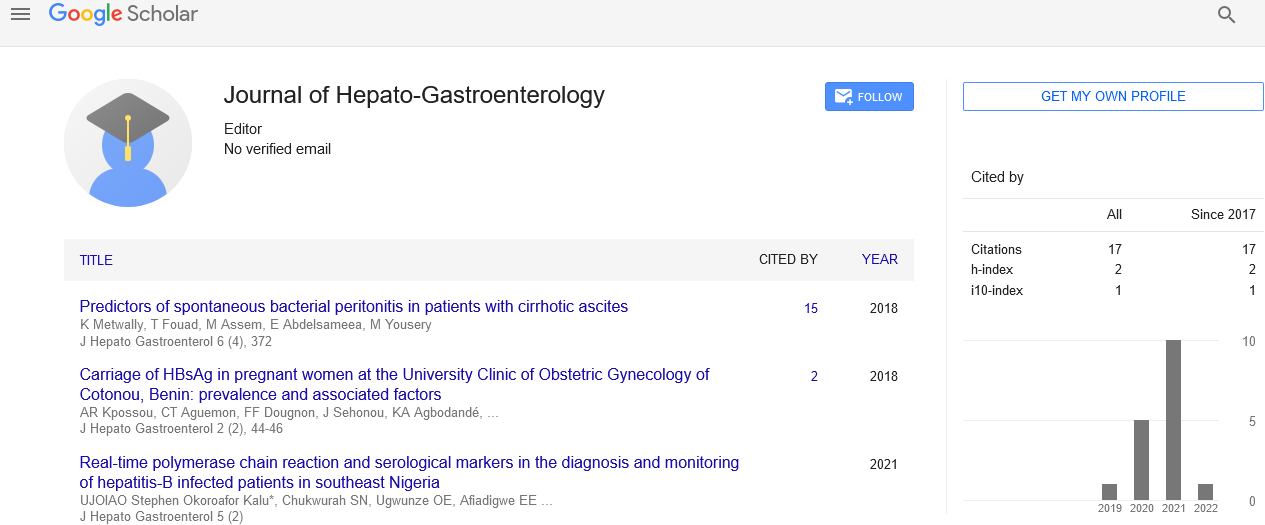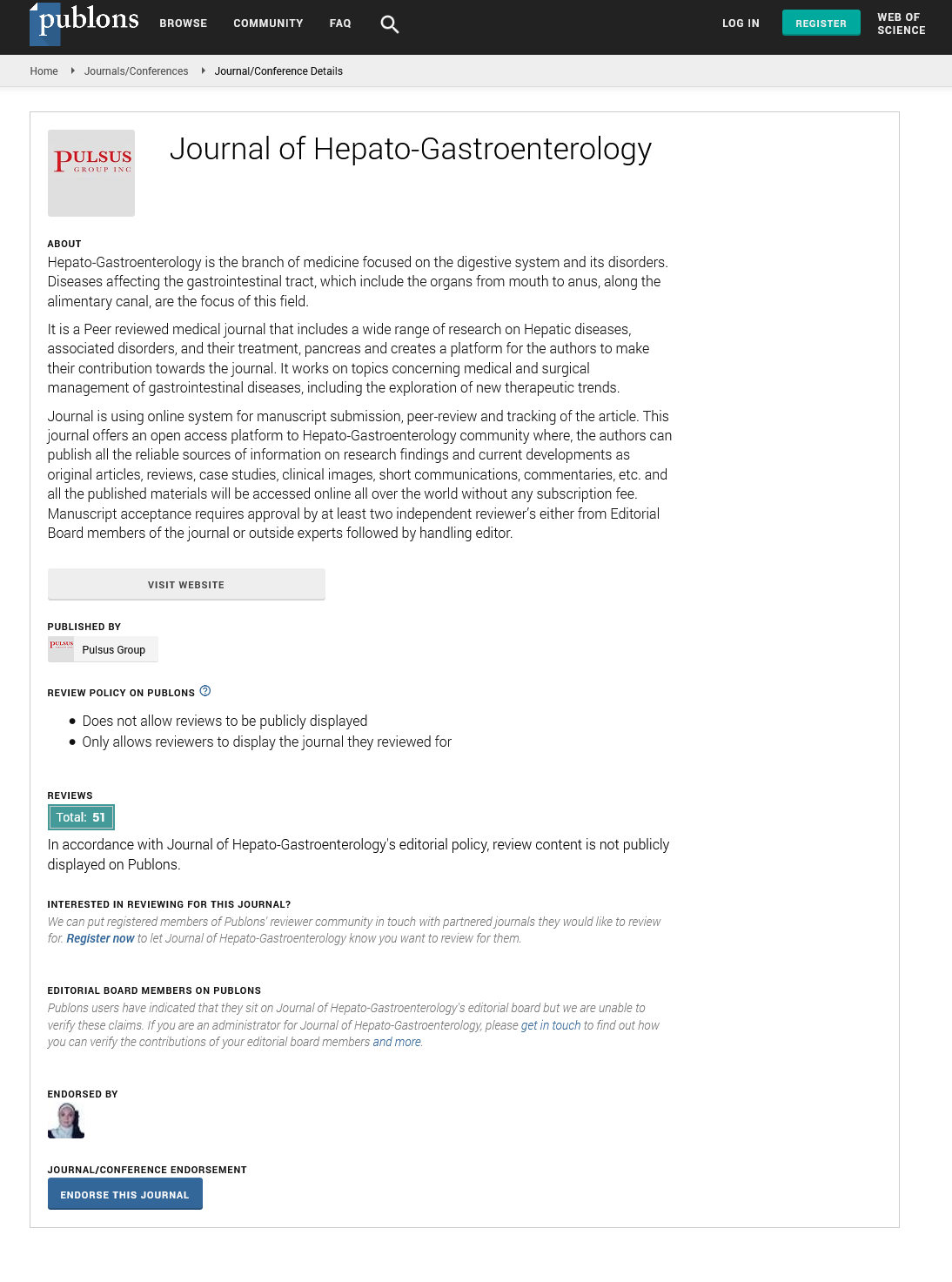Study of acute liver failure
Received: 11-Nov-2021 Accepted Date: Nov 25, 2021; Published: 02-Dec-2021
Citation: Bernal R. Study of acute liver failure. J Hepato Gastroenterol. 2021;5(2):7
This open-access article is distributed under the terms of the Creative Commons Attribution Non-Commercial License (CC BY-NC) (http://creativecommons.org/licenses/by-nc/4.0/), which permits reuse, distribution and reproduction of the article, provided that the original work is properly cited and the reuse is restricted to noncommercial purposes. For commercial reuse, contact reprints@pulsus.com
Description
Acute Liver Failure (ALF) is a dynamic, serious condition of diverse etiology. Management of ALF is depending on intensive collaborative scientific care and support. Proper recognition and remedy of common complications of liver failure are important to optimizing results. In parallel, investigations to discover underlying reason and the implementation of timely, suitable remedy may be life-saving.
Predicting affected person outcome in the generation of liver transplantation has been unfulfilling and higher predictive models should be advanced for proper stewardship of the confined resource of organ availability. The main reasons globally are hepatitis virus infections (hepatitis A, B, and E) and drug induced hepatotoxicity (mainly intentional or unintended acetaminophen toxicity). Massive hepatic necrosis is regularly visible in liver specimens in ALF and functions marked lack of hepatocytes, variable levels of inflammation, and a stereotypic proliferation of bile ductular structures (neocholangioles) obtained from activated periportal hepatic progenitor cells. This paper evaluates the liver pathology in ALF, such as varieties of zonal necrosis and their etiologies.
Is imperative, as is figuring out the underlying etiology and beginning symptomatic care. The pathologic features consist of variable amounts of necrosis and regeneration. This article evaluates pathologic type of patterns of necrosis and related inflammatory and regenerative responses in specimens from patients with acute liver failure.
Detailed pathologic examination of those specimens with scientific pathologic correlation can provide the multidisciplinary group essential data concerning etiology and timing in addition to extent of injury, and regenerative response. Pathologists are a vital component of the health care group for patients with acute liver failure.
Conclusion
In the advanced world, the maximum common motive remains acetaminophen overdose, however there are still many instances wherein there's acute liver failure of unknown etiology. The mainstay of acute liver failure management remains supportive care in the care setting. If supportive therapy does not stabilize the sickness process, the affected person can also additionally require emergent liver transplantation. This article summarizes the present day control of acute liver failure. Although rare, acute liver failure is clinically dramatic when it occurs, and calls for a multidisciplinary technique to control. In comparison with acetaminophen-caused acute liver failure, non-acetaminophen-induced acute liver failure has a greater ominous diagnosis with a decreased liver transplant-free survival. Several prognostic scoring structures for intense drug induced liver failure had been advanced to aid clinicians in choosing patients who require urgent liver transplantation. Patients who go through liver transplantation for ALF are at danger for early graft loss and death and need to be intently followed. Varied accidents can also additionally show up clinically as acute liver failure.






